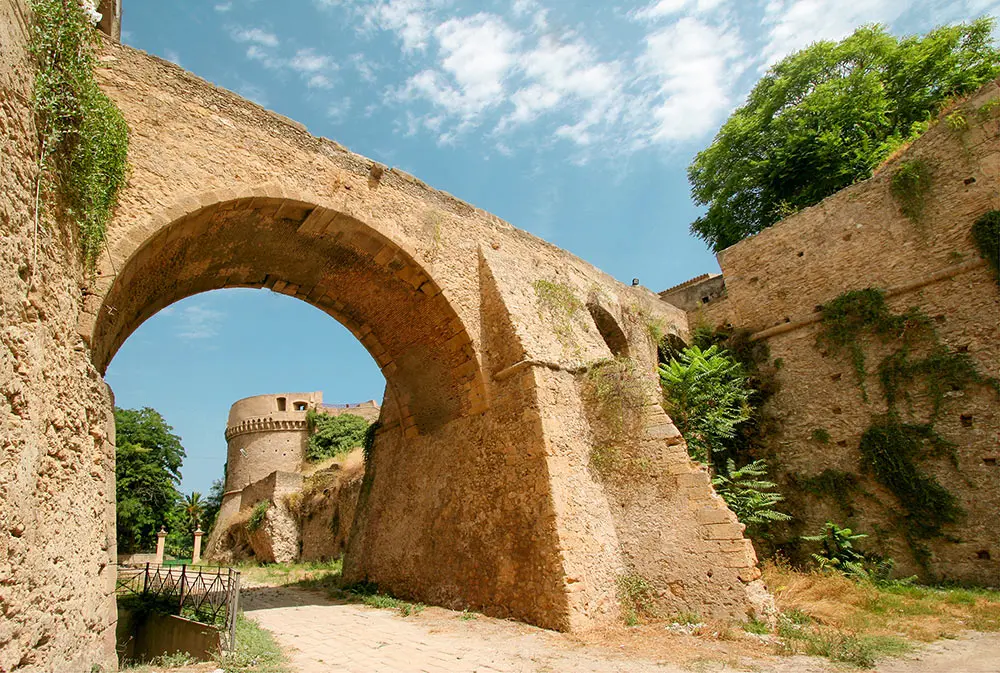Discovering Mattia Preti, the Calabrian Knight
A journey through the places and the works of Mattia Preti in Calabria

Art and Culture
Regione Calabria
Born in 1613 in Taverna, one of the towns that today fall within the territory of the Sila National Park (Catanzaro side), Mattia Preti is one of the exponents of the Italian Late Baroque, in particular of the so-called "Caravaggismo" (painting inspired by Caravaggio) and 17th century Neapolitan painting.
Nicknamed the "Calabrian Knight", in reference to his investiture as Knight of Malta by Pope Urban VIII, he was mainly active in Rome, Naples and the island of Malta, but did not forget his origins, leaving traces of himself in his birthplace and throughout Calabria.
Our journey in the footsteps of Mattia Preti takes us on a discovery of the Knight's places and works in the land of his birth.
Mattia Preti and Taverna
In the small Presilan town of Taverna, Mattia Preti was entrusted by his father to a tutor, Don Marcello Anania, the parish priest of the Church of Santa Barbara, who instructed him and his brother Gregorio, who were already predisposed to drawing, before seeing them off to Rome, where he facilitated the contacts.
Today, several works by the great local artist can be admired in the same church: The Patronage of Saint Barbara, the Madonna of Loreto (a Madonna and Child with Adoration of Saints) and The Presentation of Jesus at the Temple.
Another important stop among Mattia Preti's places in Taverna is the Monumental Church of San Domenico, where the painter's works represent real jewels in a larger jewel, which is the building itself.

Adjacent to the monastery of the same name, the Baroque-style building dates back to the 15th century and provides the perfect setting for the priceless heritage of frescoes, stuccoes, furnishings, sculptures and paintings found there. Among the latter are the large paintings by Giovan Battista Ortega, Giuseppe De Rosa, Francesco Ferrazzano, Gregorio and Mattia Preti.
There are no less than 11 works by the "Calabrian Knight": the altarpiece of the main altar contains his Self-Portrait, a direct homage to his homeland; the coats of arms of the side aisles, stylistically similar to those he created in the Church of St. John in Valletta (Malta), are an expression of a more political-economic link; the cycle of frescoes depicting the Stories of the Life of St. Dominic, above the arches of the nave, was designed by Mattia Preti but completed by minor artists of his school.
Finally, in the left side aisle, amidst friezes and gilding, we find four more precious canvases: Our Lady of the Rosary, the Crucifixion, the Preaching of St John the Baptist and the famous Self-Portrait with the insignia of a Knight.
In the 1970s, eight paintings by Mattia Preti were stolen from this church, fortunately found two years later and restored.
Another highlight of the Taverna itinerary in the footsteps of Mattia Preti is the Museo Civico, housed in the former Dominican convent.
Inside, we can appreciate an exhibition in chronological order, starting with a small local archaeological section and arriving at the 17th century and the paintings of the two brothers, Gregorio and Mattia Preti.

Works by the former are Saint Hyacinth and Saint Vincent Ferrer; by the latter, the Madonna of the Angels with Saints, a Saint Jerome and a sketch depicting Saints Peter and Paul.
In the following rooms, in addition to a series of sculptures, there are works from the 17th and 18th century in Naples and Calabria, including Giovan Battista Spinelli, Antonio and Giovanni Sarnelli, Mario Minniti and Antonio De Bellis.
Finally, coming to the present day, the gallery exhibits some of the greats of the 20th century, including Carmelo and Angelo Savelli, Francesco Guerrieri and Mimmo Rotella.
Mattia Preti in Calabria
Would you like to admire other works by Mattia Preti in Calabria?
After leaving Taverna and hiking in the Catanzaro Sila National Park, you can head for Cosenza.
In the heart of the city, at the National Gallery of Palazzo Arnone, among some of the most beautiful works of regional and national art, you can also admire a painting by "Calabrian Caravaggio".
This is the Martyrdom of Saint Sebastian, a recurring subject in the works of Mattia Preti, in this case from the Ferrara Dentice collection in Naples.
Another Calabrian stop that completes the itinerary to discover Mattia Preti is the Pinacoteca Civica in Reggio Calabria.
Housed in the premises of the "Francesco Cilea" Theatre, the art gallery exhibits The Return of the Prodigal Son. Inserting himself in the vast wake of artists who chose to depict this theme, from Rembrandt to Guercino, Mattia Preti painted the subject between 1650 and 1659, during the period of his activity in Naples.

Prolific as few are, the "Calabrian Knight" followed an articulated itinerary, leaving traces of his works in Rome (Barberini-Corsini Gallery and Church of Sant'Andrea della Valle), at the Museum of Palazzo Rosso and Palazzo Spinola in Genoa, in Naples (National Museum of Capodimonte, Basilica of San Lorenzo Maggiore, Church of San Pietro a Majella, the Royal Palace and the Civic Museum of Castel Nuovo), at the Uffizi in Florence, at the Pinacoteca Nazionale in Bologna, at the Regional Gallery of Palazzo Abatellis in Palermo, at the Regional Museum of Messina, at the National Museum of Abruzzo in L'Aquila and at the Civic Museum of Carpi.
https://calabriastraordinaria.it/en/news/discovering-mattia-preti-the-calabrian-knight








